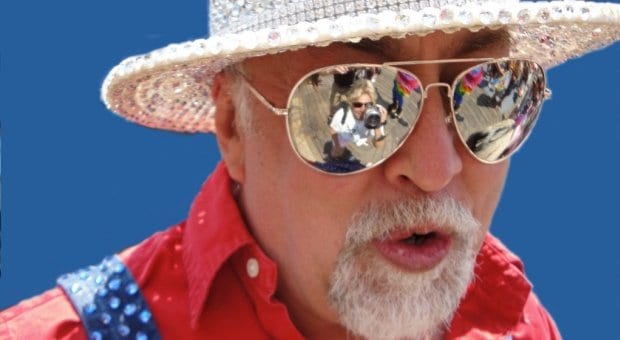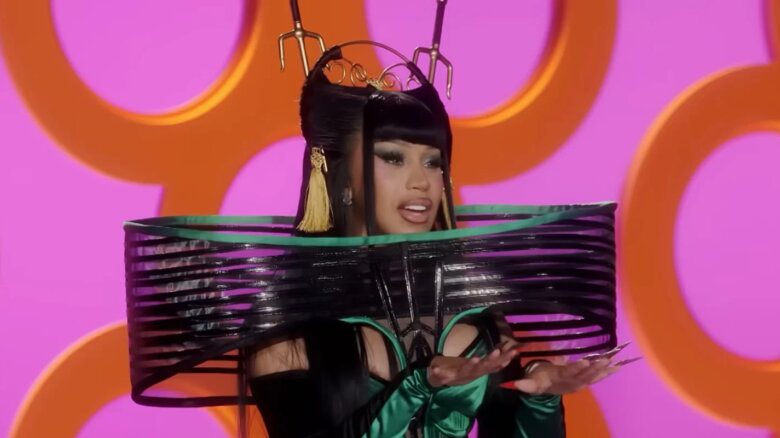Rainbow flag creator and veteran American gay-rights activist Gilbert Baker is happy LGBT activists worldwide are doing more than just waving rainbow flags to protest Russia’s anti-gay laws on the eve of the Sochi Winter Olympics.
“But it would be incredible to see an athlete raise the flag on a podium at the Olympics,” Baker tells Xtra. “Every gay person around the world would be proud to see that. I think any visibility will help shine a light on Russia’s anti-gay laws, and the rainbow flag is a visibility tool. If it turns up at the Olympics, that would be thrilling. But it will take a lot courage – a lot of guts – for any athlete to do that.”
The rainbow flag is recognized by millions of people around the world as a symbol of gay liberation. But ask Baker – who will be grand marshal of Fierté Montréal’s Pride parade on Aug 18 – how he feels about his international phenomenon and he is quite modest.
“The first time I saw the rainbow flag on a flag pole was amazing, but what makes a flag a flag is that it’s not mine; it belongs to the people,” he says. “It is torn from the souls of the people. So much art is all about branding, but mine – the rainbow flag – it’s not about me.”
Which is why when people discover who Baker is, the love he gets is pretty much unconditional. “I’ve been a grand marshal in New York, in Los Angeles, San Francisco, Key West, Vancouver, a lot of cities, and I never get tired of it,” he says. “Each and every time I find it emotional because people exude such love, wave after wave. People love the flag, and as creator of the flag, I get a lot of love.”
Baker created the rainbow flag 35 years ago at the request of slain gay activist and icon Harvey Milk in 1978. After his honourable discharge from the US army in 1972, Baker taught himself how to sew and used his skill to create banners for gay-rights and anti-war protest marches. “Harvey didn’t actually ask me to create a flag,” he explains. “Harvey’s whole thing was we needed a logo. In the mid-’70s every corporation had some kind of logo, and so we also wanted one of our own — and the rainbow worked.”
The original rainbow flag had eight colours to symbolize diversity in the queer community: hot pink (representing sexuality), red (life), orange (healing), yellow (sunlight), green (nature), turquoise (magic/art), blue (serenity/harmony) and violet (spirit).
But the eight colours were reduced to six in 1979 because of production considerations. “We actually dyed fabric those [eight] colours for the very first rainbow flag,” Baker explains, “but when I realized it was going to be a hit, I knew [commercially] that this [painstaking process] could not continue.
“Commercial flags are made out of nylon, and there is a palette of colours that all flags in the world are made from, maybe 25 colours. Pink is not one of them. So then we were down to seven colours. And seven doesn’t really work because it’s not balanced. So I took out the turquoise and left in the primary and secondary colours. Also, if you want the flag to become part of modern iconography, you need postcards and stuff. But in the 1970s, colour printing was insanely expensive.”
The strategy worked, and today the LGBT movement’s rainbow flag is the world’s best-known version. But Baker – whose art will be on display at the outdoor Café des Arts from Aug 14 to 18 during Fierté Montréal – has never made any royalties from his rainbow flag because, he says, it is in the public domain.
“I don’t get royalties,” he says. “But if I did, it would change everything, and the rainbow flag would not have the power that it does have today.”
Baker will attend Fierté Montréal’s official rainbow flag-raising ceremony on Aug 14 and will also participate in Fierté Montréal’s “peaceful” protest outside the Russian consulate in Montreal (3655 Rue du Musée) on Aug 13, from 8:30-9:30pm. “I wouldn’t miss that for the world,” he says.
Fierté Montréal Pride runs Mon, Aug 12-Sun, Aug 18.
fiertemontrealpride.com/en


 Why you can trust Xtra
Why you can trust Xtra


